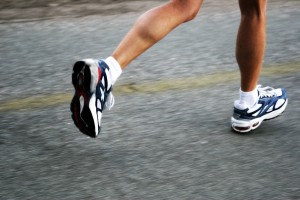 Overuse injuries are the most common reason for runners to have to alter their training or pull out of races. Certainly, errors in running form, shoes and training / mileage intensity contribute to these injuries; however there is also a bio-mechanical aspect to many of these problems.
Overuse injuries are the most common reason for runners to have to alter their training or pull out of races. Certainly, errors in running form, shoes and training / mileage intensity contribute to these injuries; however there is also a bio-mechanical aspect to many of these problems.
A concept that is gradually being embraced more in sports medicine is muscle firing patterns. As with any physical activity or motion there are key, or primary, muscles involved for stability or propulsion during running gait. These muscles play a different role than the “secondary” or back up muscles for running. Recent studies have shown that runners who are experiencing pain (knee pain, IT band syndrome, hamstring pain, foot pain, and hip pain) often have altered recruitment patterns when utilizing lower body muscles.
Running requires a reciprocating motion of the legs, pelvis, and torso not unlike crawling or walking. Although not absolutely required, more symmetry is better than less to perform an efficient running gait, especially at longer distances. Problems occur when primary running muscles fatigue too early or fail to be recruited efficiently. Our neuromuscular systems are trained to keep us moving down the road, whether 3 miles or 19, and the body, being the ultimate compensator will recruit whatever it needs to finish the workout. Interestingly, most runners with biomechanical imbalances then begin to experience tightness or pain in other areas as they compensate for primary muscles that have gone on a “labor strike”. Those secondary or back-up muscles that then become overused often become tight, and the mistake is to simply “stretch whatever is tight”, when really what is needed is to get the primary muscles firing efficiently and to have appropriate strength endurance such that they do not quit during a run.
Once key running muscles start into a compensatory recruitment pattern (some working too much, others working too little), the very nature of running tends to habituate the process and create an altered “muscle memory” pattern that affects the runner’s ability to control alignment, stability, pronation/supination and simply how efficiently they are moving down the road.
The “efficiency” of running is further altered when there is an asymmetry of pelvis-hip alignment or range of motion. Many times a runner may have such an asymmetry, but be able to run pain free when their weekly mileage is lower, but when they attempt to increase overall mileage or long runs the imbalances are exposed and they develop one of the overuse syndromes.
Testing for these running imbalances is quite easy and usually quite an eye-opener for the athlete. Simple corrective exercises focused on proprioceptive muscle recruitment patters (turn off the overused muscles and recruit/activate/strengthen the slacker muscles), or balancing out the hips/pelvis, usually results in major improvements in not only pain but running efficiency. You’ll know when you are a candidate for such intervention when rest, altered training, and simple stretching do not handle your problem.
If you have a specific problem or question related to an overuse running injury, send us an e-mail and we can help play detective and uncover the root causes of your issue. Happy Running!
To read more, click here to download full article.

0 Comments